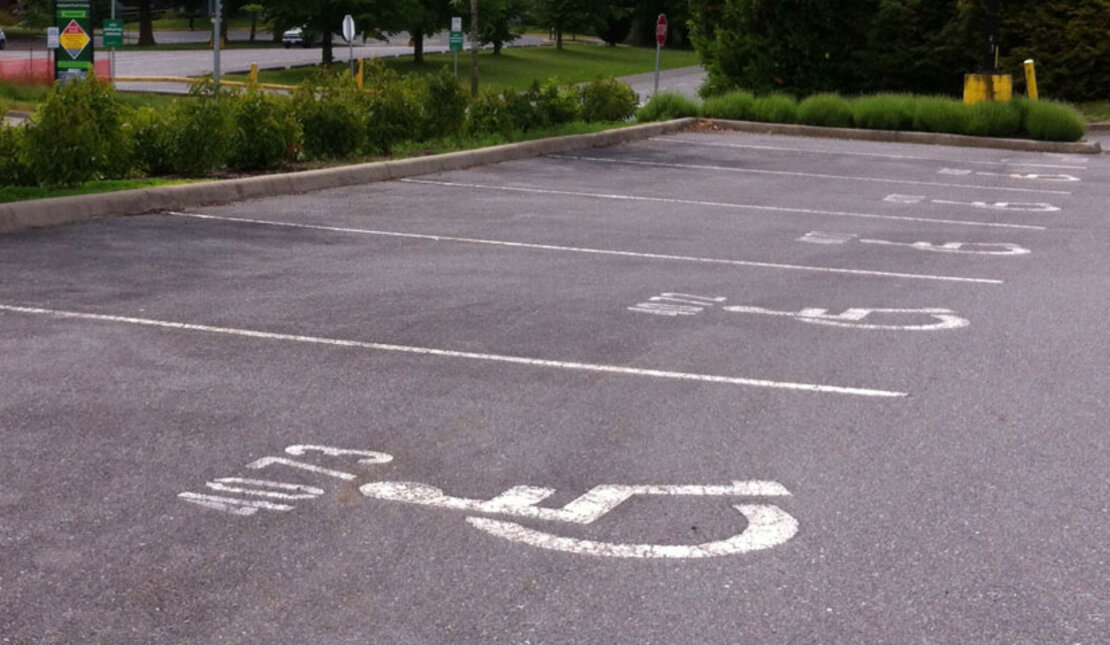How does accessible parking work?
Across Canada, there has been a recent increase in news stories involving accessible parking and those who abuse them. Indeed, this is a problem that seems to come up in almost every place where accessible parking exists.
While mean-spirited individuals are out there, there is also a lot of cluelessness about why those spots exist and how they work. This is not anyone's fault – this is simply from failure to educate the general public.
Hopefully with better understanding, everyone can have a better idea of the purposes of these parking spots.
"Why do we need accessible parking?"
Accessible parking is there for those who may have problems getting from the parking spot to the entrance. For example, if the entrance is at the top of a steep hill from the parking lot, it may make sense to create an accessible parking spot closer to the entrance, away from the slope.
This ensures safety of the person with the disability, which is a key component of accessible parking.
 Above image: Accessible parking spots often have striped "no parking" zones to allow for unloading of mobility devices such as wheelchairs.
Above image: Accessible parking spots often have striped "no parking" zones to allow for unloading of mobility devices such as wheelchairs.
"Why are the accessible parking spots so wide?"
Most able-bodied people can "squeeze." If the bus is crowded, they can "squeeze" by to make room. If the hallways are narrow, people can "squeeze" by each other. Similarly, for non-accessible parking spots, people "squeeze" between two cars to get in and out of their vehicles.
However, wheelchairs, walkers, and mobility devices do not have the same ability to "squeeze." In fact, most manual wheelchairs may need 3 feet of clearance at the least. Vehicles with wheelchair ramps need even more space than that.
That is the reason why many accessible parking spots have striped "no-parking" areas between them.
 Above image: Usually, accessible parking spots are near the entrance for safety reasons.
Above image: Usually, accessible parking spots are near the entrance for safety reasons.
"Why are accessible parking spots so close to the entrance?"
People in wheelchairs are often shorter; after all, they are sitting. As you can guess, that makes them a lot more difficult to see through a back windshield. Putting the accessible parking spots closer to the entrance reduces the chances of them getting hit by a car backing up.
As well, accessible parking spots are for those with invisible disabilities. These may include joint, muscle, or heart problems. People with those conditions may not be able to navigate the distance of a parking lot without difficulty or pain.
 Above image: Accessible parking spots allow vehicles with wheelchair ramps to have enough room.
Above image: Accessible parking spots allow vehicles with wheelchair ramps to have enough room.
"Why can't I wait in an accessible parking spot? It'll just take a minute."
Besides the fact that accessible parking spots are not waiting zones, people who need those spots may not be able to park in non-accessible spots. This can be a particularly big problem since accessible spots are already few in number.
Many times, there is also no way to confront someone who is "just waiting" without getting out of the vehicle and approaching the driver – something that is difficult or impossible to do if the rightful user of the parking spot cannot walk.
As a result, "just a minute" ends up as something much more than a minor inconvenience.
"But there are so many empty accessible parking spots!"
Not all people with disabilities are out and about at the same time; this can also be said for the rest of the population. Therefore, it is not surprising to see empty spaces in a parking lot, accessible or not.
In fact, if you look at non-accessible spots, there are often just as many empty spaces. The difference is that accessible spots are often grouped together (even side-by-side) in a very visible location (next to the entrance).
Clustering accessible spots can make it seem that those spots are "always empty."
"What happens when all accessible parking spots are taken?"
In many municpalities in Canada, it is legal for people with accessible parking permits to take up two non-accessible spots when there are no more accessible spots available. Please check with your municipality for the applicable laws in your area.
Unfortunately, this has often been seen as a selfish move by those who do not understand the law and can lead to incidents of bullying, intimidation and public shaming via social media.
Therefore, it is important that there is more awareness about not only who accessible parking is for, but also how it works and why they exist.







